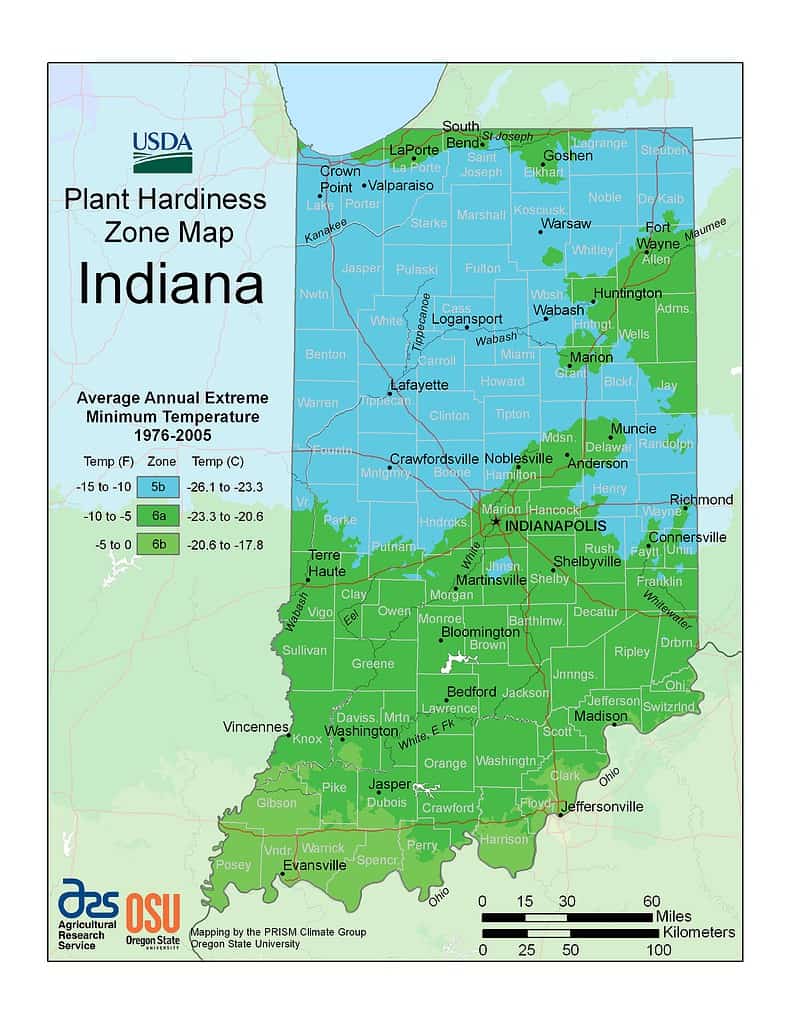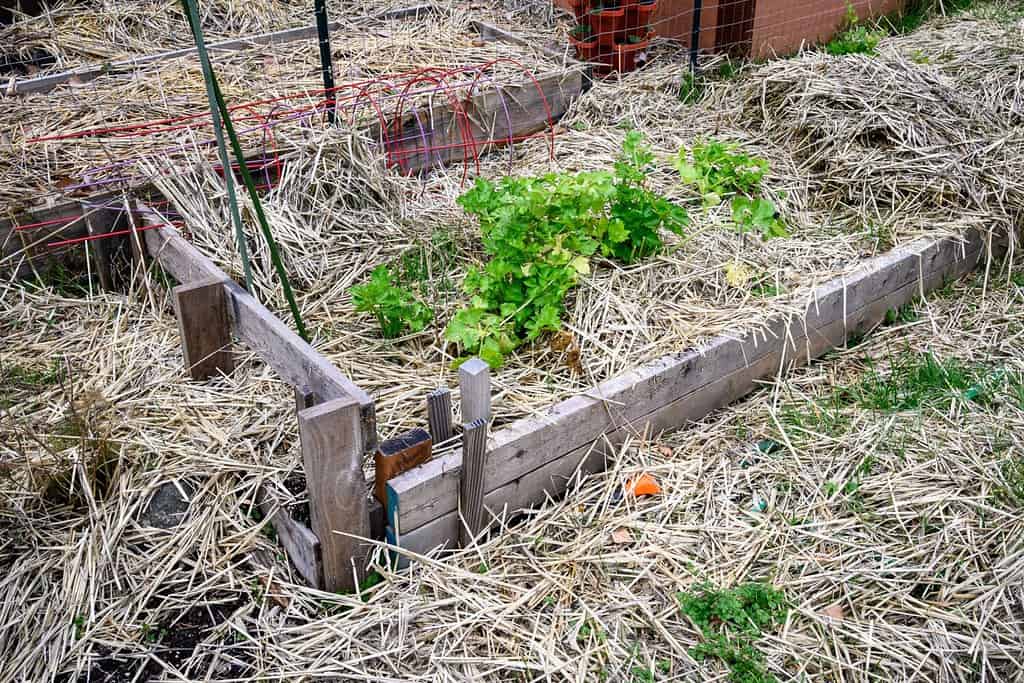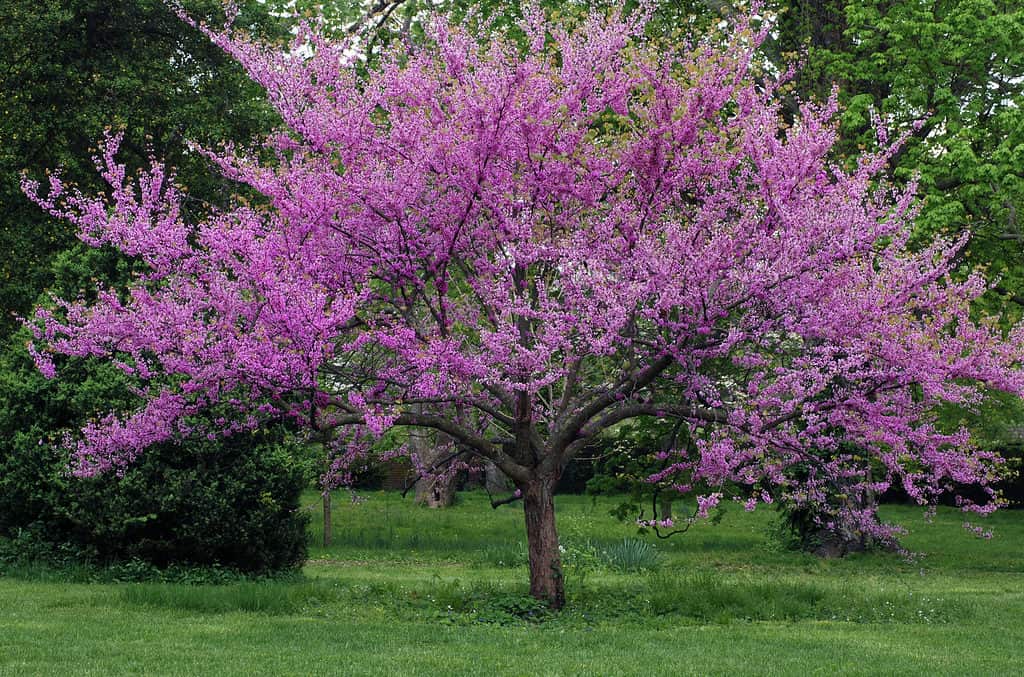Nestled right in the heart of the Midwest, Indiana has its own special charm. From the rolling hills down south to the wide-open spaces of the north, the Hoosier State has a mix of landscapes all its own. Discover Indiana’s planting zones while we spill the beans on how Hoosiers keep their flowers, trees, and shrubs alive.
What Are Planting Zones?
Alright, let’s break it down, Hoosiers. Planting zones they’re like Indiana’s secret garden codes. The state has several microclimates going on. From the chilly north to the warmer south, it’s a real mixed bag. Planting zones help you determine what kind of landscape greenery can handle the Hoosier weather.
So, when we say ‘planting zone,’ we’re talking about areas where the plants can thrive based on the local climate, also known as Hardiness Zones. Like most things in the Midwest, Indiana’s USDA Hardiness Zones fall smack in the middle of the national average. They range from 5b to 6b. The lower the number, the chillier it gets, and the higher the number, the cozier the climate.
Knowing your planting zone is gold, especially for garden-savvy Hoosiers. It is the key to picking the right plants that won’t throw a fit when the wacky Midwest weather swings into action.

Indiana’s USDA Hardiness Zones range from 5b to 6b.
What Are Indiana’s Planting Zones?
In the Basketball Capital of the World, where cars whip around Indianapolis Motor Speedway every year, Indiana’s geography doesn’t vary too much from the north to the south. However, it is still important to find and understand your zone before selecting plants for your yard. Let’s breakdown Indiana’s geography into USDA Hardiness Zones.
Northern Indiana (Zone 5b)
Home to Indiana’s share of Lake Michigan and Indiana Dunes State Park, northern Indiana includes cities like South Bend and Fort Wayne. This region experiences cold winters with plenty of snowfall as well as frost that lingers well into the spring.
Central Indiana (Zones 5b-6a)
Central Indiana covers most of the Hoosier State, including the state’s capital, Indianapolis. Home to famed author Kurt Vonnegut, central Indiana still enjoys cold winters and snowfall along with hot, humid summers.
Southern Indiana (Zones 6a-6b)
Journey to southern Indiana and experience 200,000 acres of the Hoosier National Forest as well as local caves and caverns. Including cities like Evansville, the southern Indiana climate is slightly milder than the northern regions. Winters are a little shorter and less severe, and summers are hotter and more humid.
What Plants Grow in Indiana’s USDA Hardiness Zones?
Add some color to your Hoosier State landscape with plants that will thrive in your planting zone.
Plants for Zone 5b (Northern Indiana)
In the northern reaches of the Hoosier State, winters are cold, and the weather is unpredictable–let’s face it, weather across the entire Midwest is an enigma. Nevertheless, hardy plants are a must. This includes cold-hardy varieties and also varieties that are frost-resistant.
Popular plants for northern Indiana include:
- Black-eyed Susan (Rudbeckia hirta)
- Coneflower (Echinacea purpurea)
- Northern blue flag (Iris versicolor)
- Red maple (Acer rubrum)
- Siberian iris (Iris sibirica)
- Siberian spruce (Picea obovata)
- White pine (Pinus strobus)
- Yarrow (Achillea millefolium)
Plants for Zones 5b to 6a (Central Indiana)
Central Indiana is just as unpredictable as the northern portions of the state. While it is a touch more mild in the winter, you should still plant cold-hardy and frost-resistant landscape plants. Additionally, native plants are a great option for the Hoosier State and thrive in its soils.
Popular native plants for central Indiana include:
- Black-eyed Susan (Rudbeckia hirta)
- Common milkweed (Asclepias syriaca)
- Eastern bluestar (Amsonia tabernaemontana)
- Eastern red columbine (Aquilegia canadensis)
- Little bluestem (Schizachyrium scoparium)
- Prairie coneflower (Ratibida pinnata)
- Virginia bluebell (Mertensia virginica)
- Wild bergamot (Monarda fistulosa)
Plants for Zones 6a-6b (Southern Indiana)
Expect hot, humid Midwest summers in southern Indiana and relatively cold winters, though they are shorter and less severe. You can experiment with different landscape plants in the southernmost regions and even dabble with heat-tolerant varieties like magnolias and crape myrtles.
Popular plants for southern Indiana include:
- Butterfly bush (Buddleja)
- Crape myrtle (Lagerstroemia)
- Lantana (Lantana)
- Redbud (Cercis canadensis)
- Rosemary (Rosmarinus officinalis)
- Southern magnolia (Magnolia grandiflora)
- Sweetgum (Liquidambar styraciflua)
- Vitex (Vitex agnus-castus)

Butterfly bush produces nectar-rich flowers that attract pollinators.
©iStock.com/lantapix
7 Keys to Keep Flowers, Shrubs, and Trees Alive in Indiana
Keep your plants thriving year-round, even in the unpredictable Midwest weather. Follow some key tips to keep your flowers, shrubs, and trees alive in the Hoosier State.
1. Selecting the Right Plants
Selecting the right plants for your Indiana landscape is about creating harmony. Just as a local recipe for Grandma’s coveted pork tenderloin seasoning embraces the flavors of the region, your garden should reflect your climate and the Hoosier State.
Whether you’re in the northern or southern parts of Indiana, choosing plants that align with the local climate is the secret to a thriving landscape. From hardy species that withstand chilly winters in the north to the native treasures that flourish in the milder southern regions, your choices should resonate with the spirit of the state.
2. Soil and Water Considerations
When it comes to cultivating a thriving garden in Indiana, paying attention to soil and water is important. The Hoosier State’s diverse landscapes demand a keen understanding of these foundational elements to nurture a thriving landscape.
Understanding Your Soil
Indiana’s soil varies from region to region, with some areas featuring fertile loam while others have sand or clay soil. Before planting, it is essential to assess your soil’s composition. Consult your local county extension office for a soil test, which provides insights into nutrient levels, pH balance, and texture. This information will also help you determine which plants will thrive in your landscape, as well as detail what amendments you need to improve your soil’s quality.
Proper Drainage
Good drainage is crucial. Excessive water drowns plant roots, causing them to rot. In contrast, insufficient drainage leads to root dehydration. For optimal drainage, consider raised beds or French drains to ensure that water can flow away from the root zone. Additionally, mulching around plants can also help maintain consistent moisture levels and prevent soil erosion.
Watering Practices
In Indiana, where the Midwest weather can be quite variable, it is important to monitor your local weather before watering. It is always best to water deeply but infrequently, encouraging plants to develop deep, resilient roots. Early morning, between 6 a.m. and 10 a.m., is the preferred time for watering. It minimizes water loss due to evaporation and leaf wetness, which invites diseases.
Rain Barrels and Conservation
Southern Indiana experiences intermittent droughts. Consider installing rain barrels to collect and store rainwater for garden use. This not only conserves water but also reduces your environmental impact.

The ancient Romans used a rather unusual fertilizer ingredient — human urine. They believed it was a valuable source of ammonia, which is a natural nitrogen-rich compound that enhances soil fertility and plant growth.
©iStock.com/
3. Fertilization Practices
Fertilization is important for all landscapes in Indiana. It’s like serving up a hearty meal to your garden, sustaining its health and vibrancy. Here are some key considerations for fertilizing your Hoosier landscape:
Balanced Fertilizers
Opt for balanced, all-purpose fertilizers that provide a mix of essential nutrients. These typically include nitrogen (N), phosphorus (P), and potassium (K). The appropriate ratio can vary depending on your specific plants, so be sure to tailor your choices to their needs.
Timely Application
Fertilize with your plants’ growth cycles by applying fertilizer in the early spring. This promotes vigorous growth. You can also apply a second application to sustain growth in the late spring or early summer. However, avoid fertilizing late in the growing season. This encourages tender new growth that is susceptible to frost damage.
Organic Alternatives
Consider organic fertilizers, like compost or manure. They enrich the soil and promote beneficial microbial activity. Organic options are also less likely to lead to over-fertilization and can improve the long-term health of your Indiana landscape.
Slow-Release Fertilizers
For a hands-off approach, opt for slow-release fertilizers that gradually feed your plants over time. These can be particularly useful in busy seasons or for container gardening. Additionally, remember that too much of a good thing can be harmful. Over-fertilization can damage plants and soil health. Pay attention to the signs of nutrient deficiencies or excess, like yellowing leaves or poor growth, and adjust your fertilization practices accordingly.

Regular pruning promotes vigorous blooming.
©OlgaPonomarenko/Shutterstock.com
4. Pruning and Maintenance
Pruning and maintenance shape your Indiana landscape. Here are some tips for pruning and maintaining your plants to keep them healthy and thriving:
Timing is Key
Understanding the timing of pruning is vital. Late winter, just before the new growth begins, is the best time to prune or trim most shrubs and trees in Indiana. This approach minimizes stress on the plant and helps shape its form for the coming season. Alternatively, for spring-blooming plants, prune immediately after flowering to avoid cutting off the buds for the next year.
The Art of Pruning
Pruning serves several purposes, from removing dead or damaged branches to shaping plants and promoting better air circulation. Regular pruning keeps your plants robust and reduces the risk of diseases. Use sharp, clean tools to make precise cuts and prune back to healthy buds or branches. Additionally, be cautious not to over-prune, as this can weaken the plant.
Maintenance Routines
Regular upkeep is essential to your landscape’s health. This includes tasks like weeding, mulching and removing spent flowers, which encourages more blooms. Keep an eye out for pests and diseases and address them promptly to prevent damage.
Adjusting for Seasonal Changes
Indiana’s climate experiences severe seasonal shifts–like Midwestern Mother Nature’s mood swings–and your maintenance routines should adjust accordingly. In the summer, focus on proper watering and provide shade for heat-sensitive plants. During the fall, clear away debris to prepare for the winter. Lastly, in the winter, protect vulnerable plants from harsh conditions, like frost and snow.
Mindful Mulching
Mulching is not just an aesthetic choice; it helps with moisture retention, temperature regulation, and weed control. Apply mulch in the spring to keep the soil cool and retain moisture. However, be mindful of mulch depth to avoid suffocating plant roots.
Organic mulch is especially beneficial. It breaks down, adding beneficial nutrients back into your soil. Organic mulch options include:
- Wood chips or bark
- Straw or hay
- Leaves
- Compost
- Grass clippings
- Pine needles
- Cocoa hulls
- Coffee grounds
Plant-Specific Care
All plants have unique needs. It is crucial to understand these needs. Some plants are high-maintenance and require more frequent pruning, while others require specific fertilizers and nutrients. Understand the needs of the plants you select for your landscape so you can keep it green and healthy.

Adding straw to winterize your landscape protects it from the cold and helps your plants survive the harsh winter.
©knelson20/Shutterstock.com
5. Protection From Extreme Weather
Mother Nature’s extreme Midwest mood swings mean you have to protect your vulnerable landscape plants. The Hoosier State experiences a gamut of weather conditions, from icy winters to scorching summers and everything in between. Here’s how you can safeguard your landscape against the unpredictable:
Winter Vigilance
Indiana’s winters are harsh throughout most of the state, with cold temperatures and snowfall. To shield your garden, consider adding mulch or straw around the base of your plants to insulate the soil and protect roots from freezing. For delicate plants, provide windbreaks, like burlap barriers, to lessen the impact of chilly winds. Snow can also act as a natural insulator, but heavy accumulations may require shaking or brushing to prevent branch breakage.
Sun and Shade Balance
The summer sun in Indiana is intense, leading to heat stress for plants. To provide protection, consider planting taller or shade-producing plants to cast cooling shadows. Additionally, if your garden is exposed to prolonged sun, consider providing temporary shade using umbrellas or shade cloth during the hottest parts of the day.
Adapting to Rainfall Variations
Indiana’s rainfall is erratic, with periods of drought and intense storms. For drought protection, consider installing a drip irrigation system to provide consistent moisture to your plants. Additionally, rain barrels can capture and store water during wet periods, which can be especially helpful during drier spells.
Preparing For Storms
Severe weather, including thunderstorms and tornadoes, can disrupt your landscape. However, anchoring tall plants, garden structures, and containers can help prevent damage during windy conditions. It is also wise to have a plan for relocating potted plants to shelter if storms are on the horizon.
Protecting During Transitions
Indiana’s transitional seasons, like the spring and the fall, bring unpredictable weather patterns–thanks to Midwest mood swings. Provide frost protection for delicate plants during unexpected cold snaps in the spring or early fall. Covering your landscape plants with blankets or frost cloth can save them from damage.
6. Pest and Disease Management
Maintaining your Indiana landscape involves safeguarding your plants from potential threats like pests and diseases. The Hoosier State’s diverse climate plays host to an array of garden nuisances. Here’s how to manage and protect your garden from pests and diseases:
Vigilance is Key
Regular inspection is your first line of defense. Keep a watchful eye on your plants for any signs of distress, like discolored leaves, wilting, or unusual spots. Identifying issues early is crucial for effective management.
Native and Beneficial Insects
Not all insects are pests. In fact, some are beneficial for your garden. Encourage native pollinators like bees and butterflies by planting nectar-rich flowers. Additionally, ladybugs, lacewings, and parasitic wasps are natural predators of common garden pests like aphids and caterpillars. Attracting these beneficial insects can help keep pest populations in check.
Preventive Measures
Maintain plant health through proper maintenance techniques like watering, mulching, and fertilization. Healthy plants are better equipped to withstand pests and diseases. Proper spacing and adequate ventilation can also reduce the risk of fungal diseases.
Furthermore, integrated pest management (IPM) is a comprehensive approach to pest and disease management that involves identifying the pest, assessing its impact, and then implementing the least harmful control method. This might include physical barriers, cultural practices, or, as a last resort, targeted pesticide application.
Fungal Disease Management
Fungal diseases are common in Indiana’s humid climate. To prevent issues, water your garden in the morning to allow plant foliage to dry during the day. Prune out infected plant parts and remove fallen leaves to limit the spread of fungal spores.

The eastern redbud tree charms gardeners with its heart-shaped leaves, adding a touch of natural love to the landscape.
©Marie C Fields/Shutterstock.com
7. Native and Drought-Tolerant Plants
No matter where you live, the plants you choose play an important role in achieving a flourishing, sustainable landscape. Embracing native and drought-tolerant plants is the secret to a resilient and environmentally conscious garden. Here’s why these plants need to be your go-to options:
Native Plants: A Local’s Touch
Native plants have a special connection to Indiana’s soil and weather. They’ve evolved and adapted to the Hoosier State’s unique conditions, making them resilient and well-suited for your landscape. From the charming eastern red columbine (Aquilegia canadensis) to the iconic common milkweed (Asclepias syriaca), native plants require less water and maintenance while also providing essential habitat and food for local wildlife.
One of the key advantages of native and drought-tolerant plants is their low-maintenance nature. Once established, they often require less attention, reducing the need for constant watering and care. This not only saves you time but also promotes sustainable gardening practices.
Indiana native plants:
- Eastern redbud (Cercis canadensis)
- Hoary vervain (Verbena stricta)
- Leadplant (Amorpha canescens)
- New England aster (Symphyotrichum novae–angliae)
- Purple coneflower (Echinacea purpurea)
- Shooting star (Dodecatheon meadia)
- Switchgrass (Panicum virgatum)
- Wild geranium (Geranium maculatum)
Drought-Tolerant Champions
Indiana experiences its fair share of drought, particularly in the southern regions. Drought-tolerant plants, like little bluestem (Schizachyrium scoparium) or the striking Prairie Coneflower (Ratibida pinnata), are adept at conserving water and thriving during dry spells. Their ability to survive with minimal irrigation reduces water consumption and eases the strain on local water resources.
Drought-tolerant Indiana native plants:
- Black-eyed Susan (Rudbeckia hirta)
- Butterfly weed (Asclepias tuberosa)
- Common milkweed (Asclepias syriaca)
- Eastern red columbine (Aquilegia canadensis)
- Little bluestem (Schizachyrium scoparium)
- Prairie coneflower (Ratibida pinnata)
- Virginia bluebell (Mertensia virginica)
- Wild bergamot (Monarda fistulosa)
Landscaping in the Heartland
In the ever-changing and finicky weather of the Hoosier State, landscaping is a celebration of local flavor, personal preferences, and resilience. Cultivating a landscape that thrives in the Heartland requires choosing plants that will grow in your unique USDA Hardiness Zone. It also requires routine maintenance like watering, fertilization, and pruning. Sprinkle a little Hoosier magic on your landscape, whip out your pruning shears, practice a little patience, and watch your garden thrive.
Thank you for reading! Have some feedback for us? Contact the AZ Animals editorial team.








